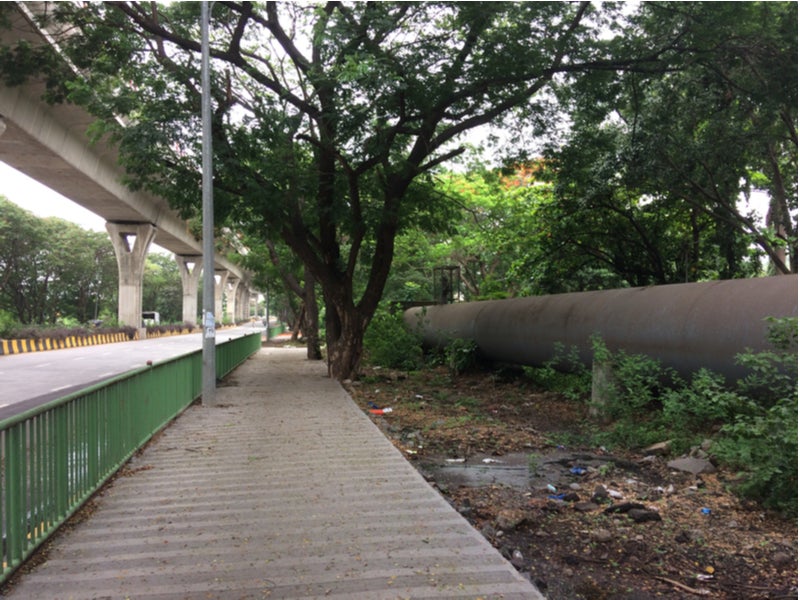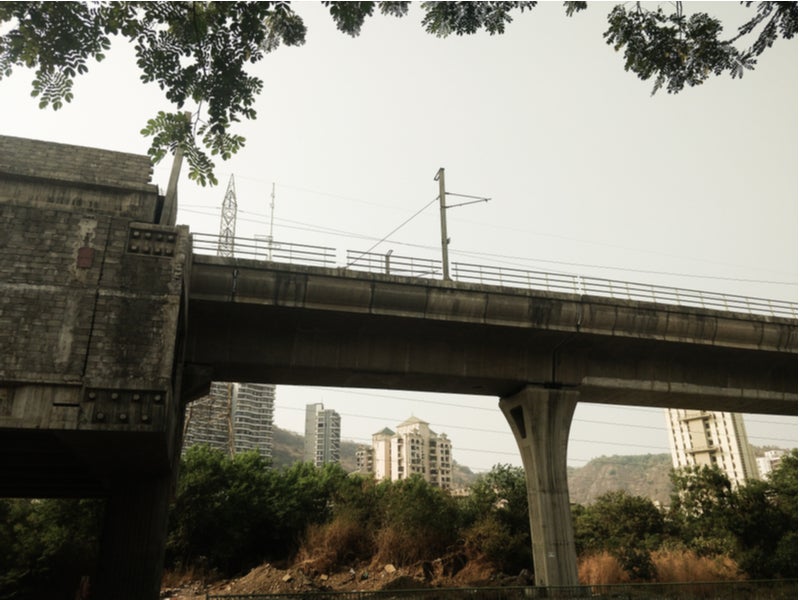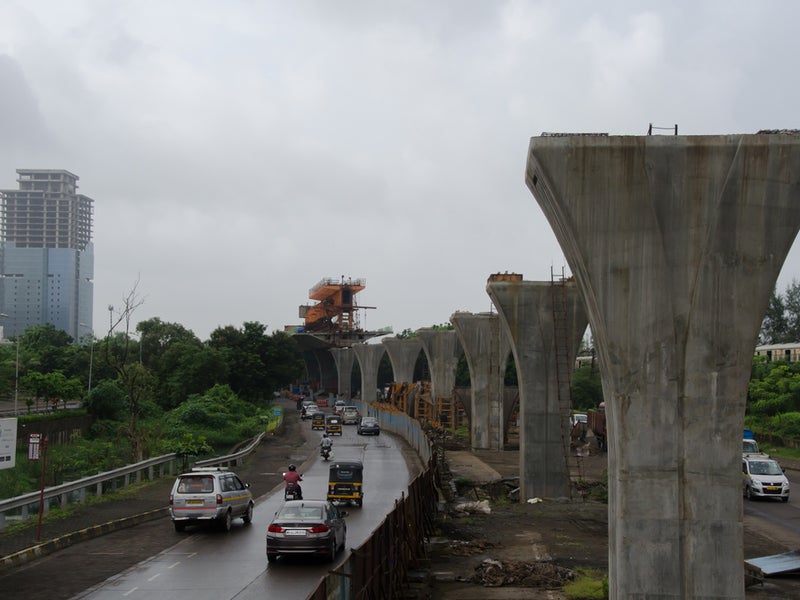Navi Mumbai Metro is a new mass rapid transit railway project under construction in the Indian state of Maharashtra. It aims to connect the suburbs of the city of Navi Mumbai.
City and Industrial Development Corporation (CIDCO) of Maharashtra is developing the metro rail to meet commercial, industrial and residential needs of the metropolis.
Navi Mumbai Metro project details
Navi Mumbai has a population of more than 2.6 million with main transport modes being taxis, auto rickshaws, buses operated by Navi Mumbai Municipal Transport (NMMT) and parts of the Mumbai Suburban Railway network.
The metro for Navi Mumbai was conceived as early as 1992 to improve the railway connectivity within the city and meet the fast-growing residential and commercial demands.
The master plan for the project was developed by Delhi Metro Rail Corporation (DMRC) from June 2008 to November 2009. The 117.3km project is being built in phases and comprises six elevated railway corridors. It is expected to serve up to 100,000 passengers per day by 2027.
After delays, a tripartite agreement was signed by the CIDCO, Indian Railways and the Maharashtra Government in August 2011 to construct the project.
The Navi Mumbai Metro is different from the Mumbai Metro being developed by Mumbai Metropolitan Region Development Authority. The two metros serve different regions within the greater Mumbai.
Corridor one between Nerul and Uran is being developed in three phases. Construction of the corridor began in October 2011. The cost of the project will be jointly shared between the Cidco (Rs9.46bn) and the Ministry of Railways (Rs4.66bn).
The Nerul-Uran railway line, also known as the Mumbai Trans-harbour Link (MTHL), will connect Navi Mumbai and Greater Mumbai, improving transit between the two cities and providing Navi Mumbai a new identity.
Corridor two is an Rs41.63bn ($822.8m) project and is being built in three phases. Work on the Belapur-Khandeshwar line was started in May 2011. General consultant for the project is a consortium of Louis Berger Group and Balaji Railroad Systems. Nagarjuna Construction Company and J Kumar Infraprojects are the general contractors.
Maharashtra Metro Rail and CIDCO agreed to complete the balance work of 11.1km-long Navi Mumbai Metro Line 1 (Phase 1), spanning from Belapur to Pendhar in February 2021. The line will pass through 11 stations and is expected to be completed by 2023.
The commercial operations between Central Park to Pendhar stations and Belapur to Kharghar sector 14 stations are anticipated by December 2021 and December 2022 respectively.
Routes and corridors on the Navi Mumbai Metro line
Railway corridor one is a 28.3km railway line, connecting Uran to Nerul via Ranjanpada.
Corridor two, which is being planned to be built over three phases, is a 21.45km line stretching between Belapur and Navi Mumbai International Airport (NMIA) via Khandeshwar, Kalamboli, Taloje and Kharghar.
Navi Mumbai Metro corridor three is a 25km-long section between Vashi and Panvel via Nerul. The planned 14km-long corridor four will connect Ranjanpada with Seawoods.
The 20km-long corridor five will connect Dighe and Belapur, passing through Turbhe. Corridor six will be a 9km section originating at Vashi with terminus at Mhape and passes through Ghansoli.
The elevated stations will feature passenger amenities as well as various sub-systems for train control and operation, with one terminal in Belapur.
Infrastructure of the Indian metro rail project
Corridor one will have ten stations at Seawoods, Sagar Sangam, Targhar, Bamandongri, Kharkopar, Gavan, Ranjanpada, Nhava-Sheva, Dronagiri and Uran. The project includes construction of five over-road bridges, 15 under-road bridges and an under-track bridge.
Larsen & Toubro (L&T) will rebuild the station at Seawoods. The project costs approximately Rs15bn ($326m).
The elevated corridor two will have 20 stations. An automated fare collection with gates is also planned at every station.
The project will include construction of segmental box girder type viaducts, elevated stations and a depot-workshop for rolling stock near Panchanand. The depot will consist of a training centre, operational control centre (OCC), schedule maintenance facilities and administrative buildings. A 25kV AC overhead current collection system will be used for train traction.
Rolling stock on the Maharashtra metro line
The project will utilise stainless-steel medium-rail vehicles. The proposed train configurations include a three-car train (driver motor car, trailer car, driver motor car) and a six-car train in the future (driver motor car, trailer car, motor car, motor car, trailer car, driver motor car).
Designed by CRRC of China, eight trains with three coaches each arrived at the Taloja Pendhar Metro station in May 2020.
The 3.9m-high and 2.9m-wide coach features longitudinal seating arrangement for optimal capacity. The trains will run on standard gauge of 1,435mm with speeds ranging from 35km/h to 85km/h.
The planned communication systems include CCTV, public information display systems, radio systems, telephones and public announcements.
A continuous automatic train control system is also planned to support automatic supervision, protection and operation of the trains.
Contractors involved with Navi Mumbai Metro project
An Ansaldo STS-led consortium, including TATA Projects and CSR Zhuzhou, secured a contract to provide system integration and supply of CBTC technology-based signalling system and control, telecommunications, automatic fare collection and storage for equipment, in July 2014. It will also provide metro’s technological infrastructure and rolling stock.
Systra Group based in India was selected for the detail designing studies for Navi Mumbai Metro Line 1. The project comprises the detailed design of the entire power supply and traction system, as well as supervisory control and data acquisition (SCADA) and power simulation studies for the Navi Mumbai Metro Line 1 (Belapur to Pendhar) project.










